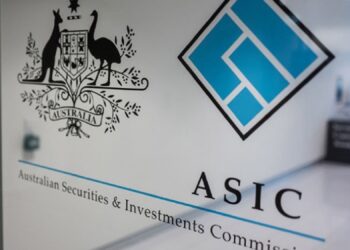Most dealer groups have very profitable advisers who have good funds under advice (FUA) figures and generate plenty of revenue for the group.
On the other hand, there are planners who have few clients, generate little income and are a burden on the group.
If it is a large group, there are usually new planners starting their careers who also do not generate income, which is another overhead for the profitability of a dealer group.
Ipac Securities national head of financial planning Sally Manion said if an adviser has few clients they take up too much time servicing them, which is not good for either the client or the dealer group.
“We have to find a balance that delivers focus on providing the right amount of advice and using the adviser’s skills,” she said.
“By definition, if an adviser is looking for more clients it means they have less time to service their existing clients.”
Ipac uses a model where there are service staff who look after the practical part of a client’s portfolio while the adviser delivers advice and strategies.
Matrix Planning Solutions managing director Allison Dummett said servicing large client bases is both a service and profitability challenge.
“What we have done is looked at problems at practice level and developed ways of delivering premium advice more profitably,” she said.
“The Prospera cash flow management tool delivers cash flow management and debt servicing service to the client who did not want to previously engage in ongoing advice.”
Dummett said it creates a long-term quality relationship by delivering monthly reports.
“Because this is premium advice which adds value to the client, and they see the ongoing service they receive each month, they are prepared to pay a fee for service,” she said.
Manion said ongoing advice business is an economic driver for most dealer groups and practices, but that’s not necessarily the measure for profit per client.
“The level of revenue from an adviser might be for FUA [funds under administration] and the advice fees it generates,” she said.
“But the question is how the adviser spends their time when there is a portfolio in place and how to make the profit sustainable in the future.”
Manion said getting the offer to clients and the revenue stream right is the key.
Bridges chief executive officer Alex Hutchinson said there is no simple formula to boosting profitability for dealer groups through adviser efficiency.
“Different groups stand for different things, and some try to be all things for all people,” he said.
“That is a model many people are choosing, but we are trying not be all things to all people, as Bridges focuses on providing financial planning advice and stockbroking services.”
Hutchinson said the other components of providing complete financial services to clients are outsourced to specialist providers.
This advice model at Bridges has evolved during the past year, and Hutchinson said not all advisers accepted it, which led to some people moving on.
“We now have fewer planners but higher FUA,” he said.
“That came hard for many Bridges planners, but we changed the culture and that has become a point of difference.”
Matrix is also changing to a fee-based service, which Dummett said would improve profitability.
“Our advisers over time will increase the proportion of engaged, fee-paying clients, leading to a more profitable business,” she said.
“The more profitable the advice to the client, the more profitable the relationship is to the adviser and to us.”
Manion believes service levels are crucial to profitability, but that has to match what the client wants, while accepting every client is different.
“Because every client is different, the adviser needs to make a clear offer of the levels of service,” she said.
“There are some clients who the adviser calls every week, and we have a strong framework to optimise the offer.”
Ipac determines service levels for its clients via weightings it assigns them, with those having a higher weighting needing more attention.
Manion said it is accepted that advisers can only handle a certain number of weighted clients otherwise service levels will fall.
“We have a level of confidence that an adviser can look after ‘X’ number of weighted clients and still deliver good service,” she said.
“But we don’t weight the client based on FUA, as, for example, somebody who is five years from retirement might need a lower level of servicing than somebody about to retire in a couple of months.”
Manion said to offer more service means a cut in the adviser’s time talking to clients.
“From the practice management point of view, it is about having real clarity on what is over-servicing and managing the profitability of the practice,” she said.
One way of improving adviser efficiency, which in turn adds to the bottom line, is automating components of services used by the adviser.
At Bridges, its client base has expanded to include non-bank institutions, which are proving to be a good source of referrals.
“As a result, our referral business has grown over 100 per cent,” Hutchinson said.
“We now have an efficient automated process to get the referrals from non-bank networks to the adviser.”
Hutchinson said handling referrals more efficiently has brought benefits for the younger planners who build a client base quicker and grow their FUA faster.
“Bridges has created a referral process that is more focused and disciplined,” he said.
“We are using technology to get efficiency from the front-end through to the platform, which is creating an adviser not a processor.”
Hutchinson said this means the adviser spends more time in front of the client rather than dealing with processing the client’s investments.
“We have developed a highly automated practice management system, which means the adviser spends the maximum amount of time in front of the client,” he said.
“Bridges provides a service that allows advisers to see clients, which has been developed because we listen to what out planners say about what they want from the dealership.”
Dummett agrees software is making advisers more efficient, and that is boosting FUA and profitability.
“Because we have invested in software that models the client’s individual strategy, advisers can offer a highly tailored service to each of them and to a higher number of clients at a time,” she said.
“This is compared to boutique firms that might offer highly tailored advice but are limited in the number of clients they can manage because there are no efficiencies available.”
Dummett said automation is making advisers more efficient, which is achieved by not looking at each client but managing the solutions and the strategy to boost FUA and profitability.





